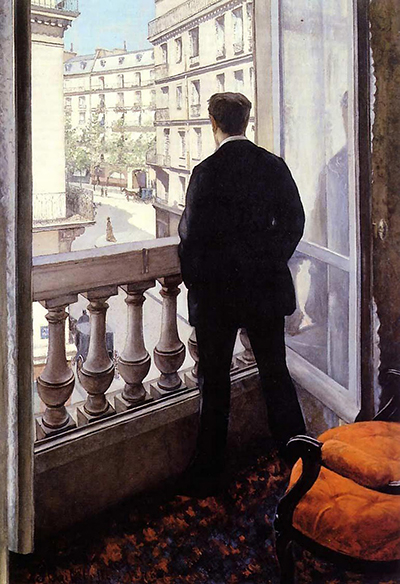Gustave Caillebotte completed Jeune homme a sa Fenetre (Young Man at his Window) in 1875 and it provides an excellent example of his frequent use of different elements of the city of Paris within his work.
Gustave Caillebotte frequently portrayed the lives of the upper classes as well as those lower down the pecking order. The former would normally be found enjoying Paris at a leisurely pace (Paris Street, Rainy Day), whilst the poor would tend to be hard at work (The Floor Scrapers). In the painting found here he provides a personal, intimate scene of domestic relaxation as a young man looks out over the beautiful architecture of central Paris. This compares to the work of German painter, Caspar David Friedrich who did precisely the same, only from within landscape scenery.
This painting is very carefully composed in order to deliver as much visual information as possible. The carpet and furniture sneak into the scene to help us understand more about the social status of the man who stands with his back to us. More is learnt from the decorative touches of sculpture that line his window. Finally, the overall setting is complete by the addition of the rest of his street, featuring a continuation of elegant French architecture.
Salvador Dali's Woman at her Window is perhaps the most similar artwork to this, although several artists carried out related work prior to Caillebotte, with the uniqueness of his contribution being the urban setting. It underlines his love for this city and also how he was able to spot moments of personal activity within the hustle and bustle of city life.




